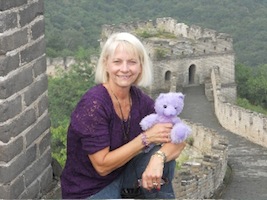

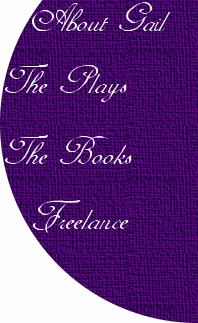
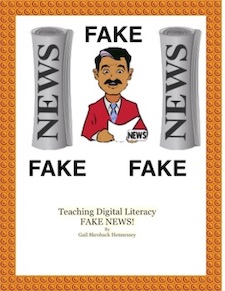
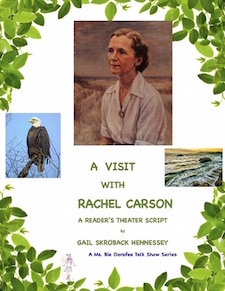

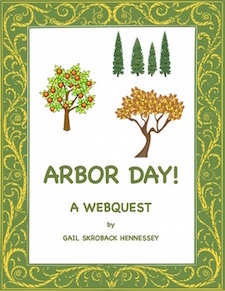
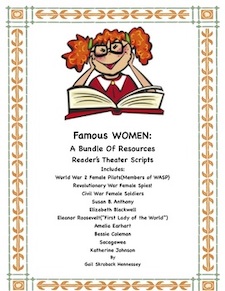
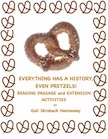
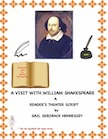
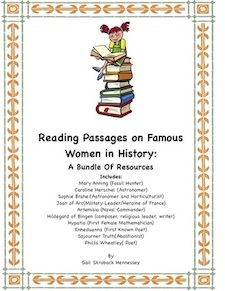
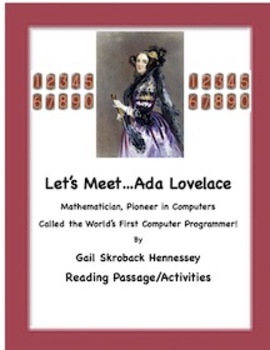
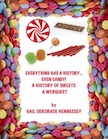
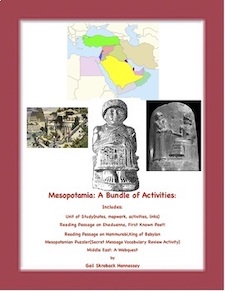
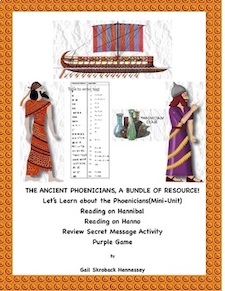
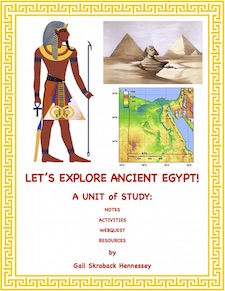
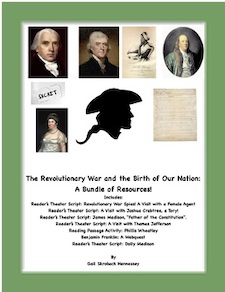
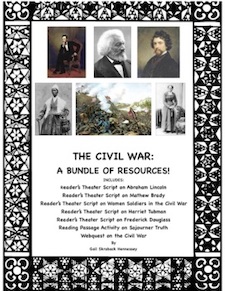
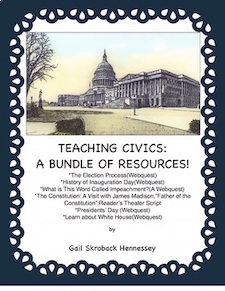
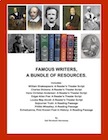


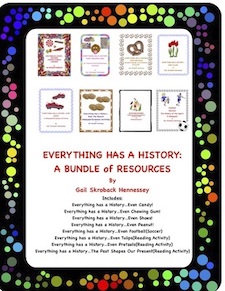
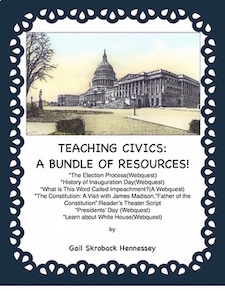
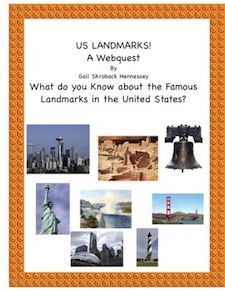
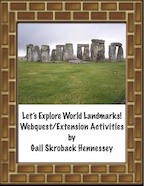
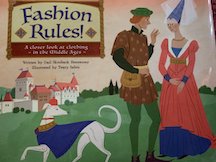
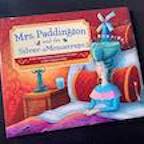
My Book-Mrs. Paddington and the Silver Mousetraps
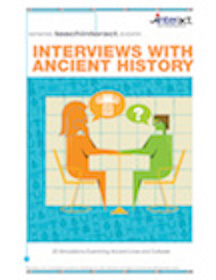

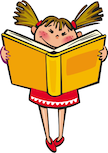
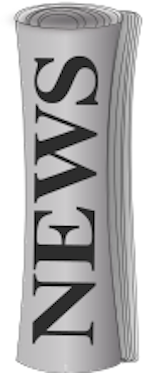
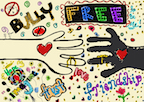
Anti-Bullying Resources
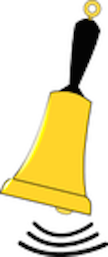
Bell Ringers!
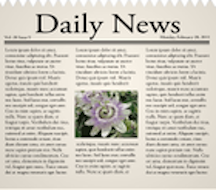
Updated regularly
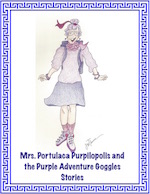
Mrs. Portulaca Purpilopilis
and the Purple Adventure Goggles

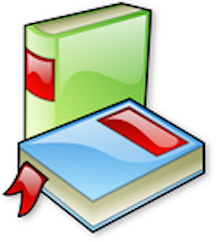

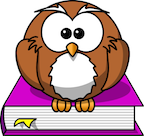
Facts to Wow your Friends!

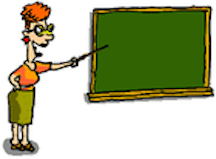 Teaching Ideas!
Teaching Ideas!
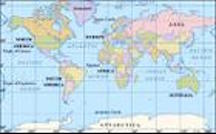


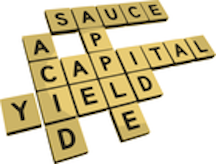

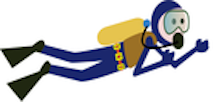
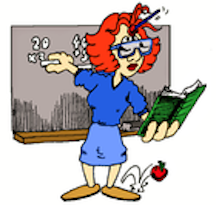

Mrs. Waffenschmidt

`

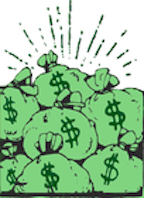


Mail Gail:
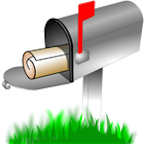 Gail Hennessey
Gail Hennessey
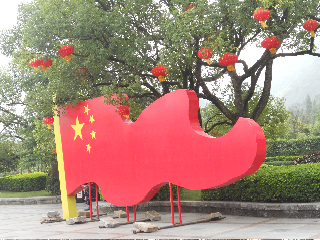
Confucius Says...Let's Explore China!
- Listen to Chinese music. Check out Music from China (click on sample our music) for a great selection of different Chinese music for students to sample classical, folk and more.
- Probably, the most famous historic structure in China is the GREAT WALL. The pictorial book, The Great Wall of China by Leonard Everett Fisher, is a great way to introduce students to this unique man made structure which can be seen from outer space. Built entirely by hand, this wall snakes up mountain ranges, down into valleys and across deserts of northern China. The wall is the longest structure ever built and stretches close to 4000 miles. It was built as a defense against invaders from the north. Some of the walls originate to 400 BC. Around the years 220 BC, the emperor Shihuangdi(Chíin) began the huge undertaking of connecting the many different walls. According to an excellent video, The Great Wall and TodayĎs Beijing, Video Field Trips 1988, enough dirt and stone were used in the construction of the wall that it could circle the earth with an 8ft high wall! Student could write a creative composition pretending to be a worker on the wall which is also nicknamed the 'largest cemetery in the world'. (Thatís because if a worker died, he was buried in the wall!) Check out Enchanted Learningfor some photographs and information on this amazing structure.
- Have students draw and illustrate a proverb of Confucius. Check out the following site for a listing of some of his sayings. ThoughtCo
- Have students go to Travel China Guide on terra cotta soldiers. Students can record 4 cool facts about the tomb of Shihuangdi and then create a postcard to a friend or family member with the four things they learned from the site.
- The Chinese gave the world many gifts. They were the first to use paper money, eyeglasses, umbrellas, waterproof clothing, silk and invented a harness and stirrup for the horse. They also were the first to use coal for heating and made cloth from the cocoons of silk worms. They also used kites(originally as a form of communication), made compasses from lodestone, printing blocks, paper, yo yo, and gunpowder(originally used in firecrackers not weapons). Some people also say the first windmills were erected by the Chinese and not the Dutch!
- The Chinese were the first to use 'paper' as we know it. Silk was very expensive and bamboo, another material used, was too bulky to use. Tsíai Lun experimented and after many years found that if you soaked the inner bark of a tree(he used the mulberry) in chemicals, pressed it and dried it, that you could write on it. Eventually, other things such as old rags and fishing nets replaced the tree bark. The Chinese kept the idea of paper making a secret for hundreds of years until it is told that two European monks sneaked the secret of paper making back to the west. Try making paper with this recipe found at this site: Making paper Have students try writing Chinese with Q tips and 'lampblack' ink on homemade paper or regular manilla paper. Using a lighted candle, have students carefully cover a plate with soot. The ancient Chinese called this 'lampblack'. Instead of mixing tree sap with the soot as the Chinese did, add a bit of vegetable oil.
- Click here: Three Gorges Dam and the Yangtze River
- Read about the history of the Fortune Cookie and try making them in class. Iíve included a recipe found on the internet. I tried this one year(the cooking experience was lots of fun) but itís much easier to purchase them from a Chinese restaurant!
The History of the Fortune Cookie
By
Gail Skroback Hennessey
The last time you broke open a Chinese fortune cookie, read the message inside and popped it into your mouth, did you ever wonder just who actually invented the folded shaped treat? The tiny little cookie has an interesting history that dates back almost 800 years. Back in the 13th century, moon cakes were used by Chinese to secretly hid rebellion plans against the Mongol rulers. The Chinese knew that the Mongols had little taste for the lotus nut paste dessert and ignored them. Thatís why the Chinese thought communicating by way of the cakes would be a clever idea! But, the idea of munching on a cookie with a message inside just for fun didnít seem to take hold for many years to come. It wasnít until the early 1900s that the idea of a cookie with a message seemed to take hold once again and this time it was in California! A Japanese American named Makoto Hagiwara was said to have introduced the dessert at the Golden Gate Japanese Tea Garden in San Francisco where the pastries contained thank you notes. Seems he wanted to thank his supporters for their help with a problem he had with the city government. This was in 1914 and a year earlier he was credited with sharing cookies with messages at the Panama-Pacific Exhibition. Makotoís dessert was said to be based on a traditional Japanese sembet, a flat, round rice cracker. Around 1920, David Jung, of Los Angeles, made a claim to baking up the first fortune cookie. The baker of Chinese heritage passed out the treat to homeless people around his store, the Hong Kong Noodle Company . Each cookie contained words of encouragement. Just who and which city could claim the title of inventor of the fortune cookie and fortune cookie capital of the World? Was it a man of Japanese heritage or a man of Chinese heritage? Finally, in 1983, the Court of Historical Review held a mock trial to settle the issue once and for all. The case was argued in the city of San Francisco and the winner was.......San Francisco. Since the outcome was said to have come as no surprise since the case was conducted in San Francisco, the issue remains an open question to many. Today, the Wonton Food Company in New York is the worldís largest producer of fortune cookies. Each day, two million little cookies are produced and are sold worldwide(including China) Thatís about 5.1 billion a year! It was only after 1960 that the fortune cookie could be made so quickly. Thatís because Edward Louie, of the Lotus Fortune Cookie Company, invented a machine to fold the cookies which had previously been done by hand and using a chopstick! Whomever was the first to make the tiny cookies we have come to love, there is one fact on which the world can agree. Itís an American treat. And, if you have any doubt, the Chinese call the fortune cookie , the 'Genuine American Fortune Cookies'. See the recipe and photographs here: MAKE A FORTUNE COOKIE(recipe)
OTHER RESOURCES about CHINA
Check out my, Let's Explore China Unit/Resources at my TpT Store: Let's Explore China!
Great Wall of China: A Reading Passage/Extension Activities:Great Wall of China: A Reading Passage
Country in Focus: China(Webquest/Extension Activities: Great Introduction to China!Country in Focus: China(A Webquest) 2015:
The Great Wall is even longer than previously thought. Archaeologists have recently uncovered nine additional sections of wall! Dating back about 2000 years, the newly discovered sections were found in northwestern China. The 6.2 miles of wall are made of stone and earth. Many years ago, Emperor Qin ordered a series of walls be connected to help stop invaders from the north from getting into China! Some sections of the Great Wall are about 20 ft. tall!
Photograph from DailyMail.co.uk
